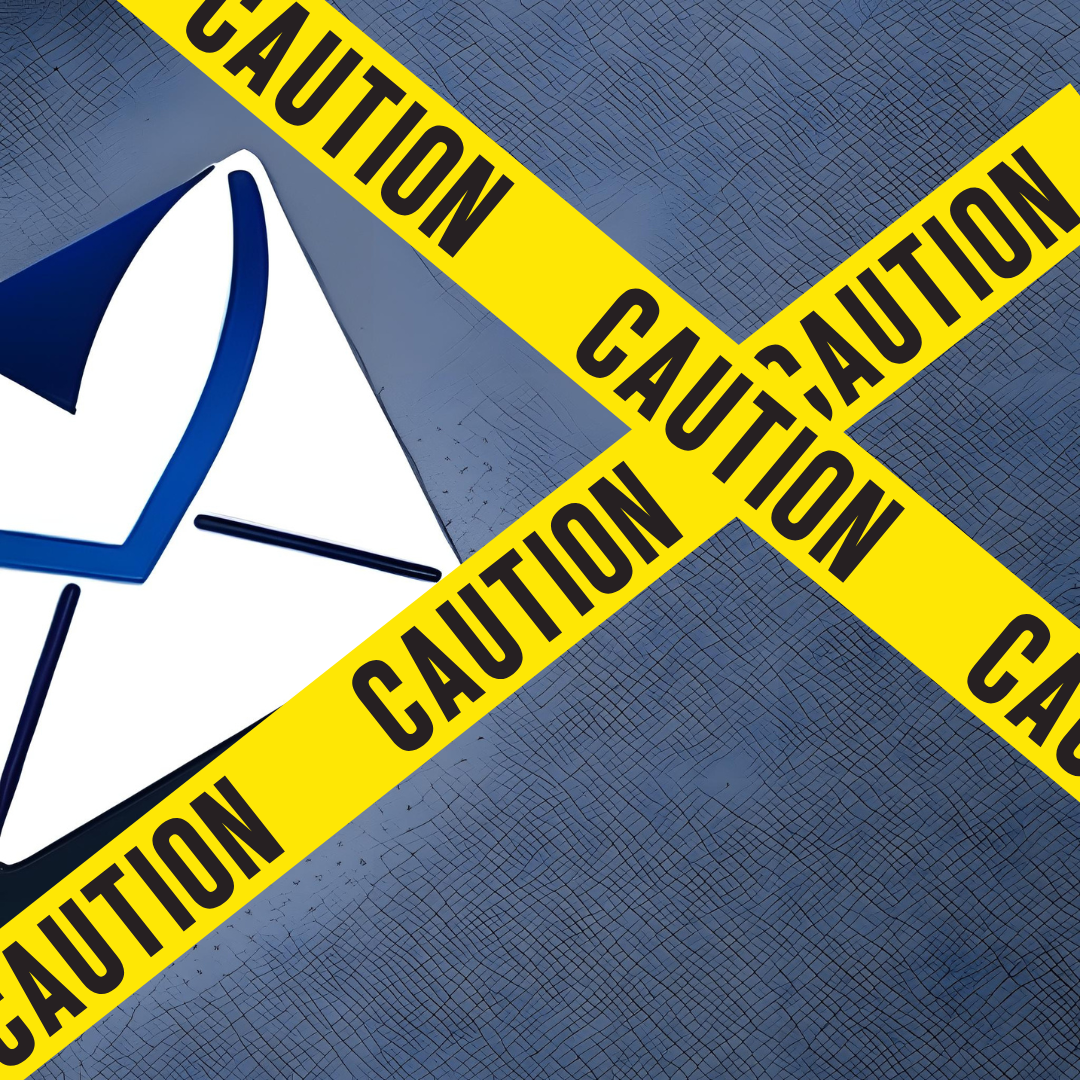Deliverability problems are bound to pop up if your organization uses email marketing.
This scannable article shows you 21 causes of deliverability issues that you will be able to prevent.
Defining Deliverability
Marketing emails sent and received properly→ a basic definition of deliverability.
Lost, blocked, and bounced emails are undelivered emails. They cost your organization time and money spent on campaigns.
Not just that… those issues hurt your future ability to reach subscribers with your messages.
Yet, there’s more to deliverability than avoiding those roadblocks.
The most desirable deliverability is landing safely in the inbox. Where emails have the best chance of being opened and read.
So use the following 21 causes of campaigns being blocked from the inbox to prevent deliverability problems that always snowball.
1. Sending to temporary email addresses
You may get the initial email opened and that will be all. Those temp inboxes won’t even be monitored after 24 hours in many cases.
2. Trickery sinks deliverability
Spam traps are meant to catch spammers. If you don’t check your email list for these traps you will be seen as a spammer and blocked from many mailbox providers.
3. Begging
Time to break up when a subscriber hasn’t opened your email in eons. Begging with repeated sends to uninterested subscribers dings your deliverability over and over. The result will be piles of undelivered emails.
4. Weak appeal up top
Power up your subject lines to peel eyeballs off the 19 other unread emails staring at your readers. The more opens you get today, the fewer future campaigns will be sent to the promotions tab.
Inbox Mailers gives you the power of other mailers’ great open rates because of perfectly-timed triggered emails. Schedule a demo to learn more about how we achieve 50% – 70% open rates. *Traders Agency used these triggers to triple conversions as well.
5. Linkless losses
Links get clicks. Clicks result in better mailer reputation. Why? Because internet providers see a click as a positive signal your emails are valuable to recipients. Don’t lose out by leaving out enticing links (use more than ‘buy buttons’).
6. Initial set-up

If you’ve not done the initial technical set-up to authenticate your domain and IP, take that step ASAP. Your ESP can provide guidance. Or see Spamhaus’ resource section. More on Spamhaus coming up.
7. No warm-up
Easy there! Perhaps you have tried hitting the ground running by sending way too many emails on day one. Experienced mailers will tell you to ease into sending from a new IP. Else, internet service companies will see the spike and slam the brakes on your deliverability.
8. Opt-in keeping you out
The best opt-in to your email list is a double opt-in. AKA confirmed opt-in, where subscribers are asked to give a “double yes” to joining your list. You may grow a list faster with a single opt-in system but list quality suffers and so will your deliverability.
9. It’s not you, it’s… ok it’s you
Seriously, we can look at low open rates and terrible click-through rates either way → wrong audience for the brand or vice versa. Same result. Be clear about what users are signing up for on your forms and stay laser-focused with your email content. #10 rhymes.
10. Our old pal segmentation
Segmentation is almost a cliche but so is “You can lead a horse to water but can’t make him drink.” Both 100% true. Segmenting your list constantly and thoughtfully goes with #9, as you’re honing email content for specific readers. Don’t discount how an unsegmented list can keep deliverability below average.
11. You’re welcome (or not)
An easy way to boost email deliverability is with email types that naturally get great open rates. The Welcome email right after a subscriber joins your list is that type of email. Plus, it sets expectations for what the subscriber will get with each email. Make sure you have Welcomes automated.
12. Automated email hiccups
Automation is an email marketer’s best friend (alongside segmentation🙂). Just be sure you test your automated emails so subscribers don’t get multiple emails on the same day. Example: Welcome email + the current week’s newsletter + a promotional email! Annoyed readers could hurt your deliverability by marking one of those as spam.
13. All ESPs not created equal
A recent feature story in Inbox Hacking (we sponsor) showed how various email service providers (ESPs) stack up in terms of emails that reach the inbox. The testing also showed how ESPs can score high then fall off a bit. Metrics are only valuable if you watch your analytics like a hawk.
📧Inbox Hacking is a Free resource
Packed with tools-n-tactics for email marketers, sent twice a week. A bi-weekly deliverability booster, if you will. Join for free.
14. Failing to A/B test
A/B testing is as glamorous as… segmenting on a Saturday night. But it’s worth the effort if you can tweak your subject line, for example, to get a 9% better open rate, right? What about a 2% better click rate over the entire year? These positive engagements get more of your future sends delivered safely to the inbox.
15. Timing, but wait ⚠
I’ve begged readers in the past to avoid Googling “best times to send emails.” Triggered emails are the best timed emails— and Inbox Mailers improved upon that with ‘inbox listening’. So save yourself 12 hours of fruitless Googles and test drive Inbox Mailers first. Get up to 70% open rates, higher click volume, and naturally improved deliverability as a result.

16. Run it again
I remember a high school football announcer yelling “It’s the same play over and over!” into the mic one night when his home team was losing. Effective plays should be run over and over. With email, some studies have shown no decline in open rates between one newsletter per week and multiple editions per week. Track click rates and unsubscribes to avoid sending too many.
17. Open rates
More of your emails getting opened will keep your sender reputation strong. Apple’s email privacy update made open rates a less reliable metric. However, since all mailers are dealing with this issue, the goal is still to get high open rates. You have no control over Apple’s effect on email metrics. Optimize your emails for getting noticed then opened or else other metrics like clicks and conversions can’t happen.
18. Untidy email list
No way you can keep those fake addresses and temp emails from getting onto your list. But regular list clean-up using automated tools will remove bad addresses and keep them from damaging your deliverability. ZeroBounce is one such tool that can help avoid undelivered emails.
19. Landing in Spamhaus’ crosshairs
If you end up on any email blocklist, take action. But Spamhaus is the main list you must avoid. Take action as soon as you receive any notice from Spamhaus. Ignoring this organization is a mistake that will destroy your deliverability. Luckily, any mailer can avoid being blocklisted by avoiding spammy practices. FYI: Misconceptions about Spamhaus.
20. Not using the 80/20 rule
Email engagement gets more future emails delivered to the inbox. But so few mailers take advantage of the 80/20 rule. Most of your opens, clicks, and conversions will come from about 20% of your list. So if you send this select group of subscribers MORE emails (and more personalized ones) you’ll get even heavier engagement. Which does what? Increases deliverability to your entire list as ISPs see more positive engagement signals from your most active readers.

21. Throwing caution to the wind
Good idea on an adventure, not so much with email campaigns. Don’t hit send until you test the waters. There are countless subject line testers available. These tools help you craft better subject lines – a key to getting more emails opened. Also, this basic email tester will alert you if your email looks like spam (and if you’re on any blocklists). Sure, the site looks a bit aged but it’s a solid tool that does exactly what it says and requires no technical skills or set-up to use.
Deliverability Wrap-Up
What else can I say? Those 21 causes of deliverability problems give you plenty of warnings so you can improve your email marketing results.
Deliverability is a constant battle with a hundred factors to monitor.
The key? What you do today affects what happens to your email campaigns tomorrow, next month, and next year.
So using clean best practices for all aspects of your email marketing strategy is the best way to avoid deliverability issues.
No shortcuts.



